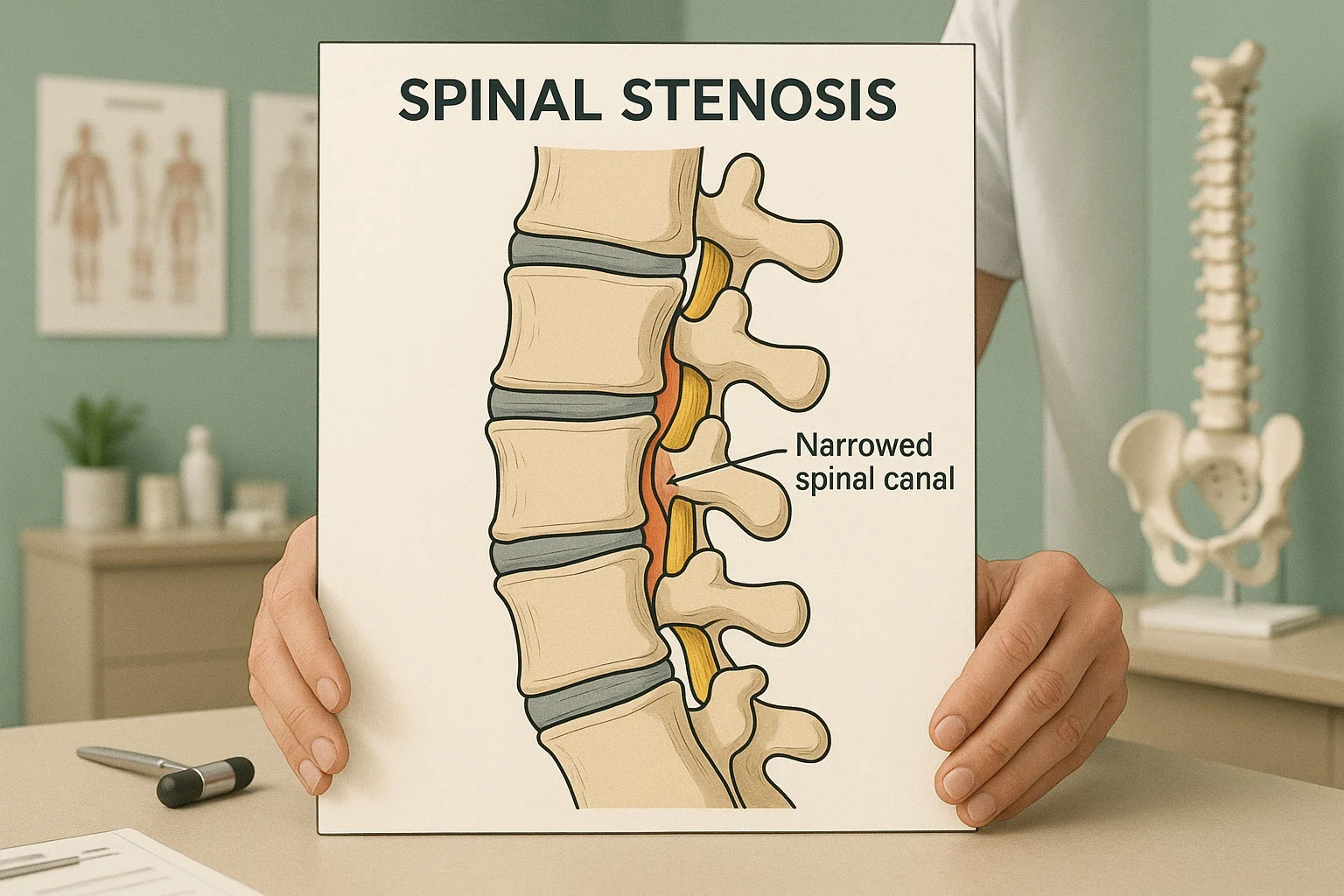Your workspace could be silently damaging your spine. Poor ergonomic desk setup contributes to over half a million workplace injuries annually, with many cases requiring time away from work. As a chiropractor, I’ve seen countless patients whose workplace pain could’ve been prevented with simple adjustments.
Creating an ergonomic desk setup isn’t just about comfort—it’s about protecting your body from long-term damage. Let me share the evidence-based strategies that can transform your workspace and safeguard your health.
Why Ergonomic Desk Setup Matters
Proper desk ergonomics maintain the spine’s natural curvature, reducing lumbar stress and preventing disc degeneration [1][4][6]. When your workspace supports your body’s natural alignment, you’re protecting yourself from the cumulative damage that leads to chronic pain.
The research is clear: ergonomic interventions decrease neck and back pain incidence by 37-43% according to controlled studies [11][15][16]. That’s nearly half of workplace-related pain eliminated through simple adjustments.
The Hidden Cost of Poor Computer Posture
I often tell my patients about Sarah, a marketing manager who came to me with severe neck pain and daily headaches. Her monitor sat too low, forcing her to crane her neck downward for hours each day. This forward head posture compressed her cervical spine and triggered tension headaches.
Workers using ergonomic setups show 18-22% productivity increases through reduced discomfort [7][9][14]. When you’re not fighting pain, you can focus on what matters most.
Essential Components of an Ergonomic Desk Setup
Monitor Positioning
Your monitor height is crucial for maintaining proper cervical alignment. The top of your screen should sit at or slightly below eye level, with your gaze directed slightly downward at the center of the screen. Position your monitor at least 20 inches away—about arm’s length distance.
Chair Support and Seating
Your chair forms the foundation of your ergonomic desk setup. Use lumbar support pillows if chairs lack proper curvature [2][4]. Your feet should rest flat on the floor with knees at roughly 90 degrees. If your chair doesn’t support your lower back’s natural curve, you’re asking for trouble.
Keyboard and Mouse Placement
Keep your keyboard and mouse at elbow height to maintain neutral wrist position. Your shoulders should remain relaxed, not hunched or elevated. This positioning prevents the repetitive strain that leads to carpal tunnel syndrome and shoulder impingement.
Movement Strategies for Desk Workers
Even the perfect ergonomic desk setup can’t overcome the dangers of prolonged sitting. Alternate between sitting and standing every 30-45 minutes [12][16]. This simple habit reduces spinal compression and improves circulation.
Perform cervical retraction exercises every 90 minutes of sitting [20]. Pull your chin back while elongating your neck—this counteracts the forward head posture that develops from looking at screens.
For those dealing with existing discomfort, professional back pain treatment can address underlying issues while you implement these ergonomic improvements.
Key Takeaways for Your Ergonomic Desk Setup
- Position your monitor at eye level to maintain neutral cervical spine alignment
- Use proper lumbar support to preserve your lower back’s natural curve
- Take movement breaks every 30-45 minutes to reduce spinal compression
- Keep keyboard and mouse at elbow height for neutral wrist positioning
- Perform regular cervical retraction exercises to counteract forward head posture
Frequently Asked Questions
How often should I adjust my ergonomic desk setup?
Review your ergonomic desk setup monthly and whenever you experience new discomfort. Your body changes, and small adjustments can prevent big problems. If you’re experiencing persistent pain despite proper ergonomics, consider a professional evaluation.
What’s the most important part of an ergonomic desk setup?
Monitor height makes the biggest immediate impact on spinal alignment. Most people position their screens too low, creating forward head posture and neck strain. Start there, then address chair support and movement habits.
Can ergonomic desk setup prevent all workplace injuries?
While proper ergonomics significantly reduces injury risk, it’s not foolproof. Combining good ergonomics with regular movement, strength training, and professional care when needed provides the best protection for your spine and joints.
How long does it take to see benefits from improved ergonomic desk setup?
Many people notice reduced discomfort within days of implementing proper ergonomics. However, reversing postural adaptations and muscle imbalances takes weeks to months of consistent good habits.
Should I use a standing desk for my ergonomic desk setup?
Standing desks can be beneficial when used correctly, but they’re not magic solutions. The key is alternating between sitting and standing throughout the day. Pure standing or sitting both create their own problems.
What ergonomic accessories are worth the investment?
A quality lumbar support pillow and document holder provide excellent value. Ergonomic keyboards and mice help if you’re experiencing wrist discomfort. However, proper positioning of standard equipment often works just as well as expensive specialized gear.
Your workspace should support your health, not undermine it. These ergonomic desk setup principles, backed by research and clinical experience, can protect you from the epidemic of workplace-related pain.
If you’re already experiencing workplace-related discomfort, don’t wait for it to worsen. Understanding what to expect during your first chiropractic visit can help you take the next step toward relief.
Ready to find relief? Schedule an appointment online or visit us at Brooklyn Chiropractic Care, 112 Greenpoint Ave. STE 1B, Brooklyn, NY 11222. Experience relief, Embrace Wellness!
References
- Northwest Wellness – Optimizing Your Workspace
- Essential Chiropractic – Workplace Ergonomics Tips
- International Journal of Allied Health Sciences
- Chambers et al. – Sit-Stand Desks Review
- Capitol Physical Therapy – Ergonomic Desk Setup
- Nassab Chiropractic – Ergonomics and Chiropractic
- PubMed – Ergonomic Interventions Study
- PubMed – Sit-Stand Research
- Nassab Chiropractic – Productivity Research
- Chambers et al. – Pain Reduction Studies
- PubMed – Movement Break Research
- Lederman Chiropractic – Cervical Retraction Exercises


